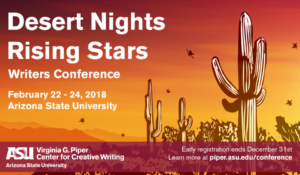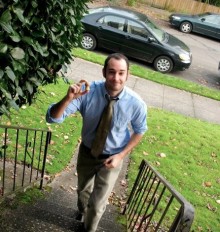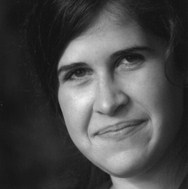 Gary Blair is a junior in ASU’s Interdisciplinary Studies Program with concentrations in Biology and Creative Writing.
Gary Blair is a junior in ASU’s Interdisciplinary Studies Program with concentrations in Biology and Creative Writing.
Superstition Review: What is your position with Superstition Review and what are your responsibilities?
Gary Blair: With Superstition Review I’m an Art Editor. Specifically, I review the open art submissions adding my input to the final selection process and solicit art from established sources to increase the quality of SR publications.
SR: How did you hear about Superstition Review and what made you decide to get involved?
GB: I was looking into an internship with Hayden’s Ferry Review, Arizona State’s print literary journal, when I received an email from the ASU English Department asking for applications to join SR. I chose to apply to SR because as an undergraduate I can be more involved in material selection and publication processes.
SR: What are you hoping to take away from your Superstition Review experience?
GB: I’m planning to learn how an online literary journal works. Though I’m only responsible for a small percentage of the work, being behind the scenes allows me a first-hand perspective for most everything involved.
SR: Describe one of your favorite literary or artistic works.
GB: Many years ago when I was in elementary school, we had a program called Art Masterpiece. Once a week a volunteer would come in with a famous print then tell us about it and the artist. Starry Night by Vincent Van Gogh grabbed me at a young age. Maybe I like the contrast of yellow and blue, maybe it’s the swirling in the vegetation, I’m not sure. I just can (and have) sit for hours, letting the painting take my mind.
SR: What are you currently reading?
GB: Mostly, I read my anatomy and physiology textbook. I do keep bookmarks in my poetry textbook, 100 Hair-raising Little Horror Stories edited by Al Sarrantonio and Martin H. Greenberg, Les Misérables by Victor Hugo, and The Complete Far Side by Gary Larson.
SR: What is your favorite Superstition Review section, and why?
GB: Art! On almost every site on the web you find some attempt at art. It’s often no more than a decoration, but it’s there. Some of it’s bad and most is cute for cute’s sake. SR promotes artists who provoke thought, a rarity on the web.
SR: Do you prefer reading literary magazines online or in print?
GB: In print. My netbook doesn’t do well in the tub and there’s something to be said for paper products that I can drop into a bag without worrying about. As phone and/or Kindle-type technology improves, I may change my mind.
SR: Do you write or create art? What are you currently working on?
GB: The day poorly drawn stick figures are popular, I’m set. Until then I write fiction. I’m currently submitting a story entitled “Penny as My Thoughts” to other journals. It’s a vaguely creepy short story about a penny obsessed man who discovers that some of his pennies are good luck and while others are bad. I’m also finishing the editing of a fantasy novel. It centers on a young woman whose home is only kept safe from ravenous plants by mages who keep the ground frozen.
SR: Besides interning for Superstition Review, how do you spend your time?
GB: Schoolwork, family, friends, the usual. Sometimes I write, paint models, play computer games, mess with my two fish tanks, or read a book. I have 200+ TV channels and a DVR yet watch less than five hours a week. I hear that Americans average five hours a day. That almost makes it a full-time job for someone to pick up my slack.
SR: Where do you see yourself in 10 years?
GB: Married and living in the greater Phoenix area. I’ll be employed as a Physician’s Assistant in a setting with five or less medical providers. I’d like a family practice, though an urgent care clinic could be fun too. In my free time I’d like to continue my writing and have at least one story published.




